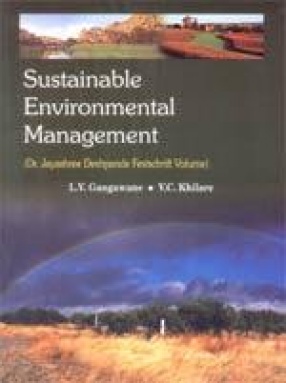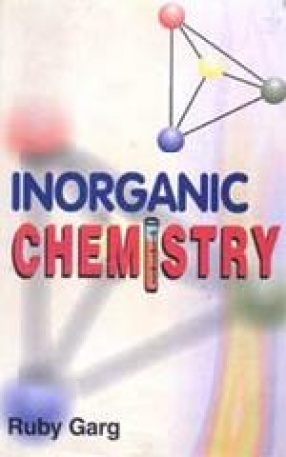The ostracodes are microcrustaceans which have colonised nearly every type of aquatic environment varying from fresh, to marine, and even phreatic waters. In sea, they occur from shore line down to hypabyassal depths. They are quite useful in demarcating shore line facies which is of prime importance in the petroleum exploration. Further, ostracode species have short life spans and many evolve rapidly. Fairly rapid evolving ostracode lineages are extremely useful as markers in stratigraphy, specially in case where foraminifera are poor. These features render them ideal biostratigraphic tools for several aspects of geological investigations, including well to well correlation in petroleum exploration, tectonic interpretation, calibration of electric logs and seismic horizons, geological mapping, plate tectonics, long distance correlations and applications to paleobiogeography. On the global scale, ostracodes are used in reconstructing continental paleogeography. They can be applied to recognise the prior juxtaposition of subsequently separated continental blocks and, conversely, the recognition of prior separation of subsequently adjacent blocks. In so far as study of ostracodes from the Indian subcontinent is concerned they were first recorded by Sowerby (in Malcomson, 1840) who described two species Cypris cylindrica Sowerby and C. subglobosa Sowerby from the eastern portion of the Deccan Plateau. Thereafter, there have been number of sporadic records of occurrence of ostracodes from different geological formations. The study of ostracodes, however, received great impetus in 1960 with publication of three important papers by i. Bhatia and Mandwal, ii. Lyubimova, Guha and Mohan, and iii. Tewari and Tandon. Soon there was a spurt in ostracode research in the country and studies were taken up, besides Oil and Natural Gas Corporation, in many universities. This is obvious from the Annotated Bibliography of ostracodes from India by Bhatia and Khosla (1971). Prior to 1960, ostracodes were described/recorded only in twenty one publications during 120 years while this figure suddenly increased by three times in next twelve years, i.e. 1960-1971. At present more than sixty researchers are working on ostracodes in Indian universities and institutes, and accordingly, a number of publications has increased several folds. It has been observed that in many of the papers, especially those published before 1980’s then figures of ostracodes are camera lucida sketches or optical photomicrographs of poor quality rendering their recognition difficult. The diagnoses too in certain cases are inadequate or not precise. To overcome these lacuna it is desirable to have atlas and/or index of the known ostracode species of the country with SEM photomicrographs. The "Atlas of Paleogene Ostracodes of Rajasthan Basins" brought out by Bhandari (1996) was the first attempt in this regard. The present "Atlas of Early and Middle Miocene Ostracodes from West Coast of India" is a sequel to it. The Miocene beds of West Coast of India comprise mainly of carbonates. These crop out along the coast in Kachchh, Saurashtra, Surat-Broach and Kerala, besides their subsurface occurrence in these areas, and Bombay Offshore (Fig.1). The Miocene beds in the subsurface of Bombay Offshore basins are main hydrocarbon producer in India. The hydrocarbons are produced mainly from L-III reservoir (Early Miocene), Bombay High. The youngest oil pool in this basin was discovered in the Middle Miocene (L-II reservoir). Hydrocarbon discoveries in the Miocene beds have necessitated study of these reservoir rocks in detail. A total of 150 ostracode species from the Early and Middle Miocene of West Coast basins of India are included in the Atlas (Tables 1 &2). One hundred and twenty species have been previously described from Kachchh, Saurashtra and Kerala. Thirty species are being recorded for the first time from the subsurface of the Middle Miocene of Bombay Offshore. Of these 18 are new and 12 species are left under open nomenclature. Many of these ostracodes have short stratigraphic ranges which have helped in finer time slicing and better correlation of strata. In absence of marker foraminifer species these ostracode species serve as useful too. By and large the type materials of the ostracodes from Saurashtra and Kerala and topotype material from Kachchh have been utilised in the atlas. A brief diagnosis of all ostracode species, supported by SEM photomicrographs, is given in alphabetical order. The stratigraphic ranges of these ostracode species have been plotted on their First Appearance (FAD) and Last Appearance Datums (LAD’s) which have helped in finer sub divisions of Early and Middle Miocene succession of West Coast of India. The ostacodes have been standardised with the help of larger benthic and planktic foraminifers.
Atlas of Early and Middle Miocene Ostracodes from West Coast of India
In stock
Free & Quick Delivery Worldwide
Bibliographic information
Title
Atlas of Early and Middle Miocene Ostracodes from West Coast of India
Author
Edition
1st ed.
Publisher
ISBN
8190134909
Length
v+173p., Plates; Figures
Subjects





There are no reviews yet.